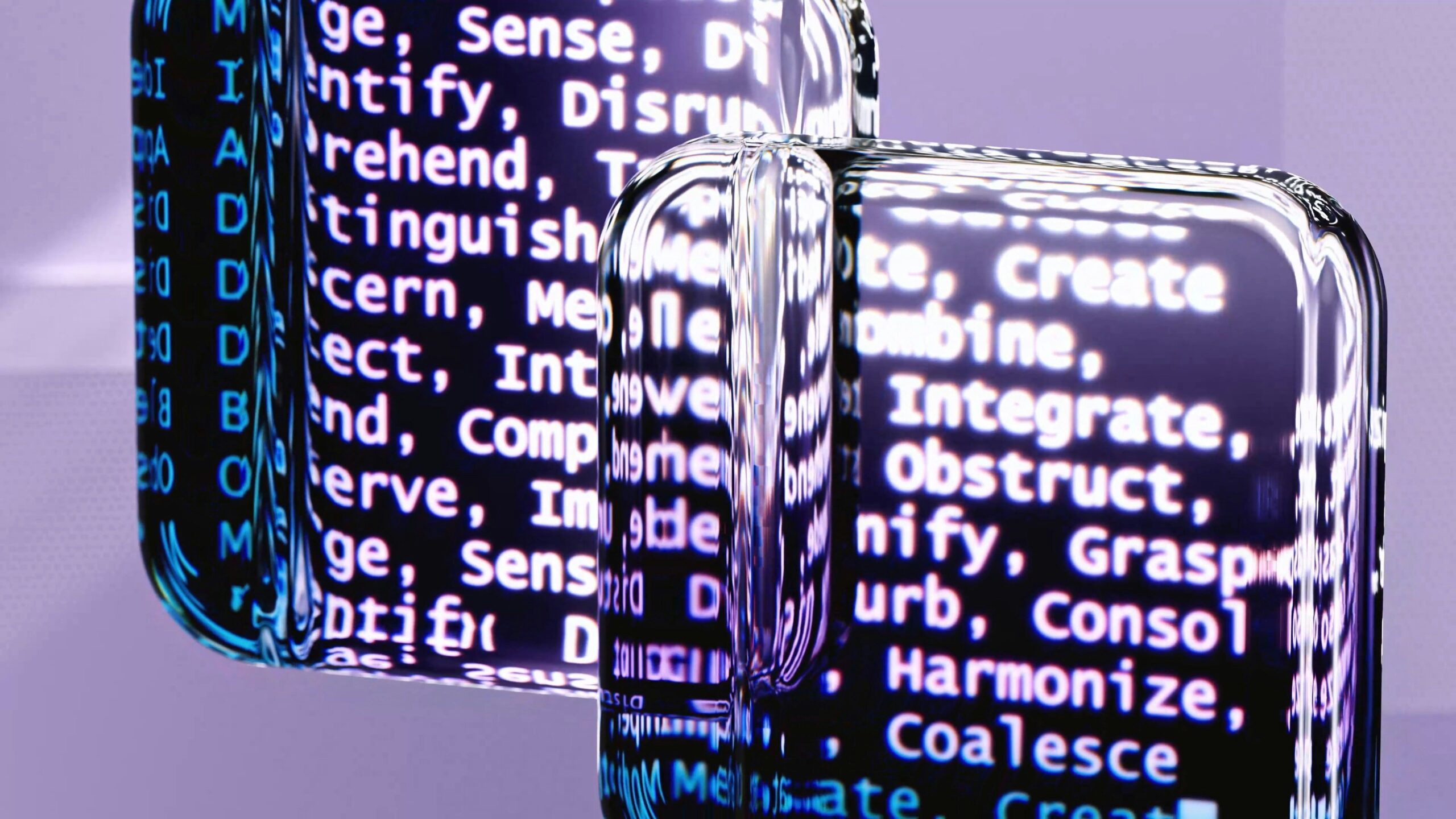Tiny pairs of eyes stare out from drooping, coral-like, fuzzy and ghoulish creatures that appear gathered together in theatrical formation against hazy skies. This is the surreal and magical world of the Ukrainian artist Rita Maikova. Bones and Ribbons, the artist’s first solo exhibition with Kristin Hjellegjerde Gallery, explores what Maikova describes as ‘the duality of existence’ that not only Ukrainians and other nations living with conflict must negotiate on a day-to-day basis, but millions of other people whose worlds have been torn apart by personal, social or political circumstances.
In these works, the divide is drawn between the body (bones) and ribbons (the soul). In each painting we can locate both modes of existence – light and dark, despair and hope – but rather than setting up opposites, the compositions gesture towards a kind of resolution or as Maikova puts it ‘the party after the battle’, a time of healing and celebration.
The Process of accessing her unconscious mind
Maikova was abroad when Russia invaded Ukraine and has not been able to return to her home country since. Finding herself caught in a limbo state, she has had to find new ways of existing in the world that involves the compartmentalisation of her emotions, in other words ‘choosing to leave behind the pain in order to leave the house.’ In some ways, this is the experience that these paintings capture, though for Maikova the act of making art is also a form of healing and freedom – it allows her to access her unconscious mind, to dream again.
We see this in the fluidity of forms that populate her compositions – hybrid characters appear, often simultaneously, as rock-like formations, rivers, undulating bodies and huge, anthropomorphic beasts against an otherwise bare, desert-like landscape that is inspired by Maikova’s upbringing in the vast, open steppe of southern Ukraine. In this show, the landscape is also sometimes the sea or the beach, defined by the line of the horizon and the changing of light that imply the passage of the day but also, and more importantly for the artist, creates shadows which, she says, ‘express our dark side that is necessary to our existence.’
mutating creatures at their own will and without her direction
Many of Maikova’s hybrid, mutating creatures have followed her through different stages of her life; they come and go, seemingly, at their own will and without her direction. This latest period of painting has brought a new figure to the fore, who is both more human than the others (with visible limbs) and female. She appears in a series of ‘portrait paintings’ as a faceless figure with only voluptuous lips and a luminous pearl in a fleshy oyster shell floating where we would expect her eyes to be.
This pearl appears elsewhere in Maikova’s work as a symbol of something ancient, magical and mysterious, but here it is associated with a distinctly feminine energy and also with sight, perhaps suggesting that this woman possesses secret knowledge or oracular powers. She is also a fragmented figure, cut apart with deep slices into her flesh. The implications are brutal, but these wounds, if that’s what we can call them, are not (or no longer) bloody or debilitating, they have simply become a part of the character.
Art that unites physical and emotional kinds of healing
In one portrait painting, the ocean runs through the cavernous gap in her chest, while the large-scale work, titled Bones and Ribbons, depicts two women, or ‘keepers’ as Maikova calls them, sitting side-by-side on the beach with pale pink ribbons tied around their bodies; one holds a ball of ribbon in her hand as if she has just finished binding them. Here, the ribbons serve as bandages, but they are decorational as well as functional with silky surfaces and frilled edges, uniting physical and emotional kinds of healing. In other works, pieces of fabric appear caught in the wind, or on a character’s neck, adding a sense of joy and occasion.


One of the darker paintings in the show titled Watering, for example, depicts a group of Maikova’s characters against a dark pink sky, drinking from a river that is shaped like a woman. Although it is an otherworldly scene, we are able recognise it as a moment of gathering. This is, in essence, what all of the paintings are about: community and not only in the sense of family or even the same species, Maikova’s characters are various and unique, embedded into the landscape that flows through and around them. They are the inventions of her imagination, but they are also visions of a world in harmony.




















You must be logged in to post a comment.